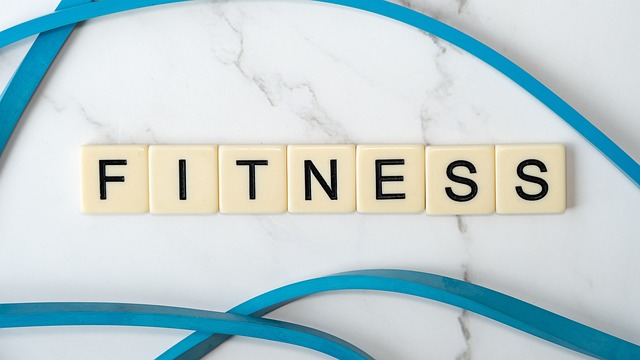Flexibility is a cornerstone of physical fitness, yet it’s often overlooked in favor of strength training or cardio. However, maintaining or improving flexibility is essential for overall mobility, injury prevention, and post-workout recovery. Incorporating yoga and stretching into your routine not only enhances flexibility but also promotes mental relaxation, improves posture, and supports long-term joint health. Whether you’re new to these practices or looking to refine your approach, here’s how to seamlessly integrate yoga and stretching into your daily life for better flexibility.
Why Flexibility Matters
Flexibility refers to the range of motion available in your joints and muscles. As we age, our natural flexibility tends to decline due to factors like sedentary lifestyles, repetitive movements, and muscle imbalances. Poor flexibility can lead to:
- Increased Risk of Injury : Tight muscles are more prone to strains and tears.
- Reduced Mobility : Limited flexibility restricts movement, making everyday tasks harder.
- Poor Posture : Tightness in certain muscle groups (like the chest or hip flexors) contributes to slouching and discomfort.
- Muscle Imbalances : Overactive or underactive muscles disrupt alignment and performance.
By prioritizing flexibility through yoga and stretching, you can counteract these issues and enjoy greater ease of movement in all aspects of life.
The Benefits of Yoga and Stretching
Yoga
Yoga combines dynamic movements, static stretches, and mindfulness to improve flexibility while enhancing strength, balance, and mental clarity. Some key benefits include:
- Improved Range of Motion : Poses like downward dog, pigeon pose, and cobra stretch target major muscle groups and joints.
- Stress Reduction : Controlled breathing and meditation reduce cortisol levels, promoting relaxation.
- Enhanced Body Awareness : Yoga teaches you to listen to your body and recognize areas of tension or tightness.
- Joint Health : Gentle yoga poses lubricate joints and increase synovial fluid production, reducing stiffness.
Stretching
Stretching focuses specifically on elongating muscles and connective tissues. There are two main types:
- Static Stretching : Holding a stretch for 15–30 seconds to lengthen muscles. Ideal for post-workout recovery.
- Dynamic Stretching : Moving through stretches to warm up muscles before exercise. Examples include leg swings, arm circles, and walking lunges.
Both forms help release tension, improve circulation, and prepare the body for physical activity.
How to Incorporate Yoga and Stretching Into Your Routine
To make flexibility work for you, consistency is key. Here’s how to create a balanced plan:
1. Start Small
If you’re new to yoga or stretching, begin with short sessions—just 5–10 minutes per day. Gradually increase the duration as your body adapts.
2. Choose the Right Time
- Morning : Gentle yoga or dynamic stretches wake up your muscles, boost circulation, and set a positive tone for the day.
- Post-Workout : Static stretches aid recovery by reducing muscle soreness and preventing stiffness.
- Evening : A calming yoga session or restorative stretches promote relaxation and prepare your body for sleep.
3. Focus on Major Muscle Groups
Prioritize areas that commonly become tight, such as:
- Hamstrings
- Hip flexors
- Lower back
- Shoulders and neck
- Calves and quads
4. Follow a Structured Plan
Create a sequence tailored to your goals. For example:
- For Flexibility : Include poses like seated forward fold, butterfly stretch, and child’s pose.
- For Recovery : Try reclined twists, legs-up-the-wall pose, and cat-cow stretches.
- For Mobility : Focus on dynamic stretches like high knees, torso twists, and side lunges.
5. Combine Yoga and Stretching
Pair yoga flows with targeted stretches for maximum benefit. For instance:
- Begin with sun salutations to warm up.
- Transition into deeper stretches like lizard pose or seated spinal twist.
- End with savasana (corpse pose) for relaxation.
6. Use Props and Modifications
Don’t hesitate to use blocks, straps, or cushions to modify poses and avoid strain. This ensures proper alignment and makes challenging poses accessible.
7. Stay Consistent
Aim for at least 3–4 sessions per week. Even a few minutes daily can yield noticeable improvements over time.
Sample Daily Flexibility Routine
Here’s an example of a simple yet effective flexibility routine:
Morning (5–10 Minutes)
- Cat-Cow Stretch : Warms up the spine and relieves tension.
- Downward Dog to Cobra Flow : Stretches hamstrings, shoulders, and lower back.
- Standing Forward Fold : Lengthens the posterior chain (hamstrings, calves).
Post-Workout (10 Minutes)
- Quad Stretch : Hold each leg for 20–30 seconds.
- Pigeon Pose : Targets hips and glutes.
- Seated Spinal Twist : Releases tension in the back and obliques.
Evening (10–15 Minutes)
- Butterfly Stretch : Opens up the inner thighs and groin.
- Child’s Pose : Relaxes the entire body.
- Legs-Up-The-Wall Pose : Improves circulation and calms the nervous system.
Tips for Success
- Breathe Deeply Proper breathing amplifies the effects of yoga and stretching. Inhale deeply to prepare, and exhale fully as you move into each stretch.
- Warm Up First Perform light cardio or dynamic stretches before static stretching to prevent injury and maximize results.
- Avoid Bouncing Bouncing during stretches (ballistic stretching) can cause micro-tears in muscles. Instead, hold stretches steadily and focus on gradual progress.
- Listen to Your Body Stretch to the point of mild discomfort—not pain. Pushing too hard can lead to injury.
- Track Progress Take note of improvements in your flexibility over weeks or months. Celebrate milestones, no matter how small.
- Stay Hydrated Dehydration can stiffen muscles and ligaments. Drink plenty of water throughout the day to support elasticity.
Addressing Common Challenges
- Tight Schedule? Incorporate mini-sessions into your day. A 5-minute stretch break every few hours adds up!
- Lack of Motivation? Pair stretching with something enjoyable, like listening to music or watching a favorite show.
- Physical Limitations? Adapt exercises to suit your needs. Chair yoga and gentle stretches are excellent options for those with mobility issues.
- Plateaus in Progress? Change up your routine occasionally to challenge different muscle groups and keep things interesting.

Leave a Reply